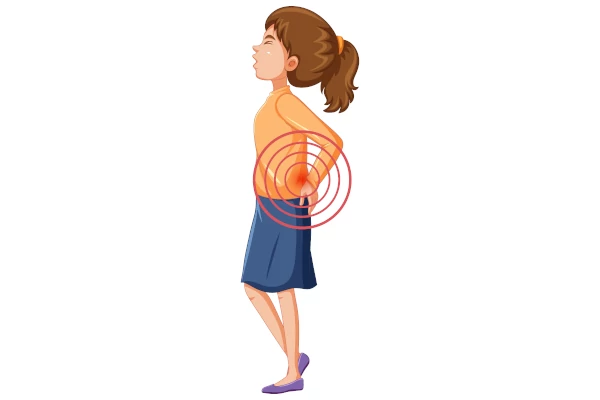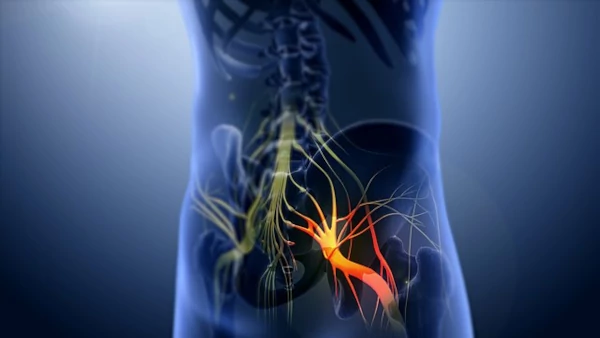Sciatica is a common condition that affects millions of people worldwide. It is characterized by pain that radiates from the lower back through the buttocks and down the back of one leg. The pain can be mild to severe and is often accompanied by tingling, numbness, and weakness in the affected leg. In this comprehensive guide, we will explore the symptoms, causes, diagnosis, and treatment options for sciatica.

Symptoms of Sciatica
The most common symptom of sciatica is pain that starts in the lower back and radiates down the back of one leg. The pain can be sharp or dull, and it can be continuous or intermittent. Other symptoms of sciatica may include:
- Tingling or burning sensation in the affected leg
- Numbness or weakness in the affected leg
- Difficulty moving the affected leg or foot
- Shooting pain that makes it difficult to stand up or walk
Causes of Sciatica
Sciatica is caused by compression or irritation of the sciatic nerve, which is the largest nerve in the body. The sciatic nerve runs from the lower back through the buttocks and down the back of each leg. The most common causes of sciatica include:
- Herniated or bulging discs in the spine
- Spinal stenosis (narrowing of the spinal canal)
- Degenerative disc disease (wear and tear of the discs)
- Spondylolisthesis (slippage of one vertebra over another)
- Trauma or injury to the spine
- Piriformis syndrome (compression of the sciatic nerve by the piriformis muscle)
Diagnosis of Sciatica
To diagnose sciatica, your doctor will perform a physical exam and ask you about your symptoms. They may also order imaging tests, such as X-rays, MRI, or CT scans, to look for abnormalities in the spine. Electromyography (EMG) and nerve conduction studies (NCS) may also be used to evaluate nerve function and detect any damage to the sciatic nerve.
Treatment Options for Sciatica
The treatment for sciatica depends on the severity of the condition and the underlying cause. In mild cases, self-care measures such as rest, ice or heat therapy, and over-the-counter pain medications may be sufficient. However, in more severe cases, your doctor may recommend one or more of the following treatment options:
- Physical therapy to improve strength and flexibility in the affected leg and lower back
- Prescription medications such as muscle relaxants, anti-inflammatory drugs, or opioids for pain relief
- Injections of corticosteroids or local anesthetics to reduce inflammation and pain
- Surgery to relieve pressure on the sciatic nerve (in rare cases)
Conclusion
Sciatica is a common condition that can cause significant pain and discomfort. If you are experiencing symptoms of sciatica, it is important to seek medical attention to determine the underlying cause and appropriate treatment options. With proper diagnosis and treatment, most people with sciatica can expect to recover fully and resume their normal activities.
FAQs
What are the most common symptoms of sciatica?
tes down the back of one leg. Other symptoms may include tingling or burning sensation in the affected leg, numbness or weakness in the affected leg, difficulty moving the affected leg or foot, and shooting pain that makes it difficult to stand up or walk.
What causes sciatica?
Sciatica is caused by compression or irritation of the sciatic nerve, which is the largest nerve in the body. The most common causes of sciatica include herniated or bulging discs in the spine, spinal stenosis, degenerative disc disease, spondylolisthesis, trauma or injury to the spine, and piriformis syndrome.
How is sciatica diagnosed?
To diagnose sciatica, your doctor will perform a physical exam and ask you about your symptoms. They may also order imaging tests, such as X-rays, MRI, or CT scans, to look for abnormalities in the spine. Electromyography (EMG) and nerve conduction studies (NCS) may also be used to evaluate nerve function and detect any damage to the sciatic nerve.
What are the treatment options for sciatica?
The treatment for sciatica depends on the severity of the condition and the underlying cause. In mild cases, self-care measures such as rest, ice or heat therapy, and over-the-counter pain medications may be sufficient. However, in more severe cases, your doctor may recommend physical therapy to improve strength and flexibility in the affected leg and lower back, prescription medications such as muscle relaxants, anti-inflammatory drugs, or opioids for pain relief, injections of corticosteroids or local anesthetics to reduce inflammation and pain, or surgery to relieve pressure on the sciatic nerve (in rare cases).
Can most people with sciatica expect to fully recover?
Yes, with proper diagnosis and treatment, most people with sciatica can expect to recover fully and resume their normal activities.
Interested in learning more about how to manage your sciatica pain? Check out our related blog posts
- How Physiotherapy Treatments Can Help with Sciatica? Read more …
- 5 Ways to Relieve Sciatica Pain at Home Read more …
- Lifestyle Changes for Sciatica Pain Relief Read more …
- Surgery for Sciatica: When Is It Necessary? Read more …
- The Role of Exercise in Managing Sciatica Read more …
- Living with Sciatica: Coping Strategies and Tips Read more …
-
Bell’s Palsy and Physiotherapy Management: A Comprehensive Guide
Bell’s Palsy is a condition that impacts the facial nerve, causing sudden weakness or paralysis on one side of the face. It can be a challenging experience for anyone but sometimes it resolves its own. Proper physiotherapy is helpful to speed up the recovery. we’ll talk about causes for Bell’s Palsy, its symptoms, and how physiotherapy…
-
How Physiotherapy Can Help with Chronic Pain Management
Chronic pain is a persistent condition that can be debilitating and challenging to manage. It affects millions of people worldwide and is a leading cause of disability. The patients most commonly complain chronic pain in back, neck and in the joints. While pain medication help to reduce the pain temporary, physiotherapy is an effective long-term…
-
Abdominal Exercises: Strengthening Core for a Healthier You
Focusing on your abdominal muscles is a great place to start, if you’re looking for ways to improve your overall health and fitness. Strong core muscles help to improve your posture and balance, and also reduce your risk of injury, alleviate lower back pain, and improve your athletic performance. In this article, we’ll discuss about…



